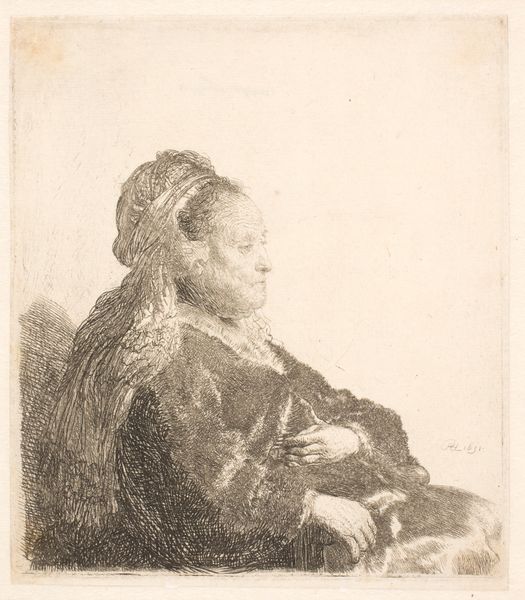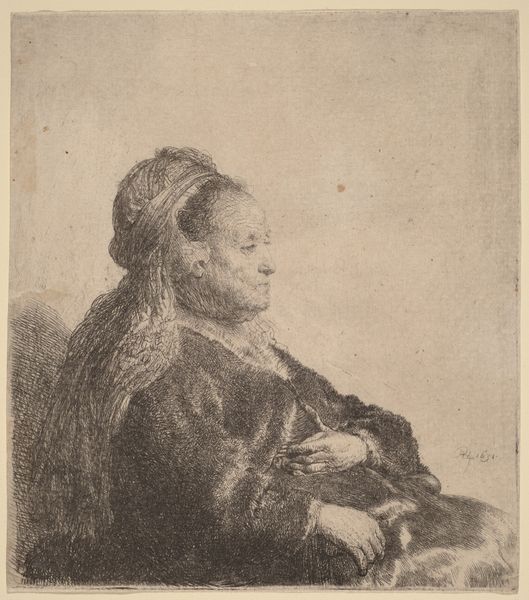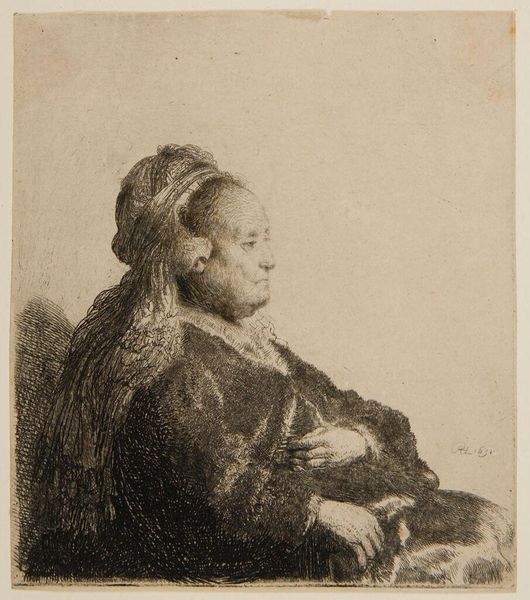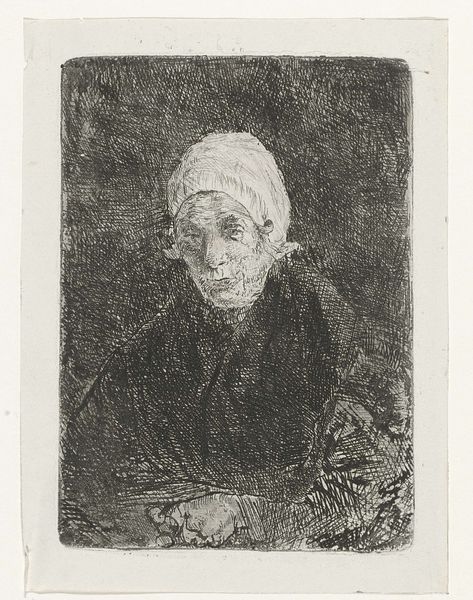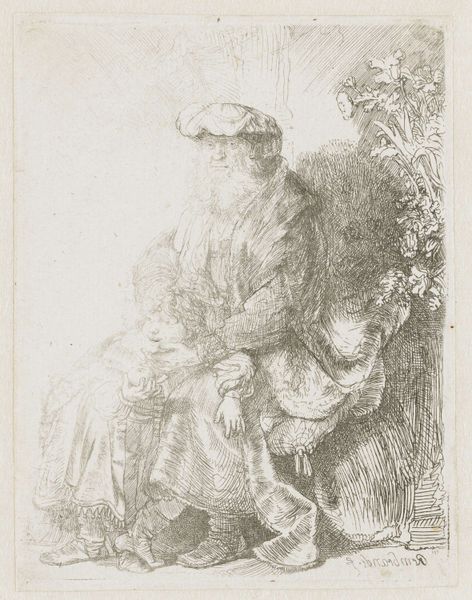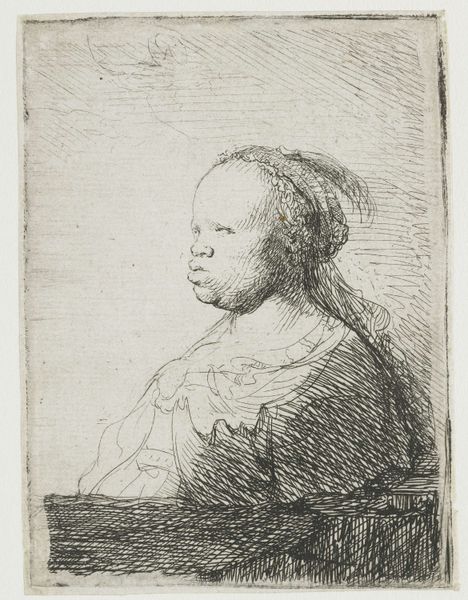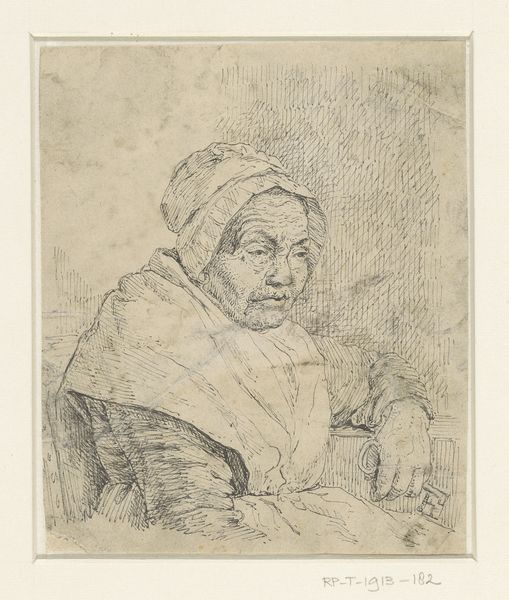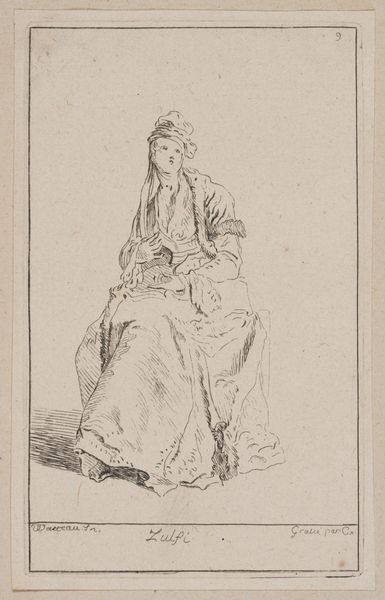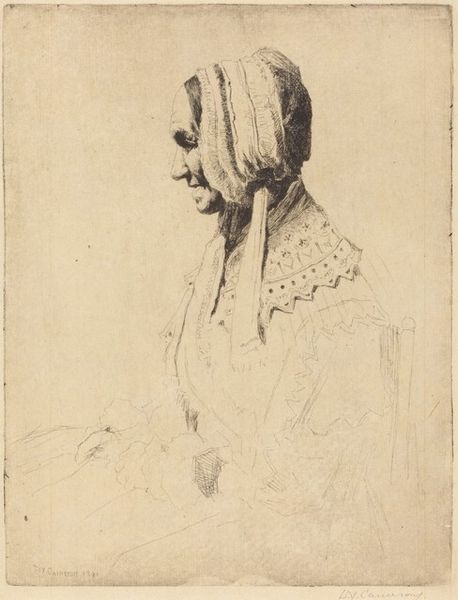
The artist's mother seated, in an oriental headdress: half length 1631
0:00
0:00
drawing, etching, paper
#
portrait
#
pencil drawn
#
drawing
#
baroque
#
etching
#
pencil sketch
#
charcoal drawing
#
figuration
#
paper
#
form
#
pencil drawing
#
line
#
pencil work
#
northern-renaissance
Dimensions: height 145 mm, width 130 mm
Copyright: Rijks Museum: Open Domain
Rembrandt van Rijn etched this portrait of his mother in the Dutch Republic sometime in the mid-17th century. He captured her seated, adorned with what he titles an ‘oriental headdress’. It's worth noting the term "oriental", laden as it is with the history of European colonialism and its objectification of Asian cultures. In Rembrandt’s time, the Dutch East India Company was a major economic power, and the ‘orient’ was a source of exotic goods, and artistic inspiration. But this isn't a straightforward celebration of Dutch power. Rembrandt was known for his interest in depicting a range of human experiences, and here, the exotic attire might be a vehicle for exploring character, rather than an endorsement of imperial fantasies. Understanding this image means diving into the visual culture of the Dutch Golden Age, exploring archival records of trade and cultural exchange, and considering the role of artists in shaping perceptions of the world. Ultimately, the etching reminds us that art is never created in a vacuum.
Comments
No comments
Be the first to comment and join the conversation on the ultimate creative platform.
